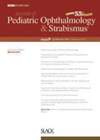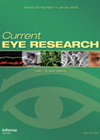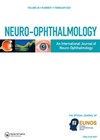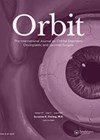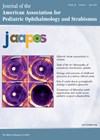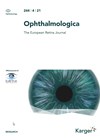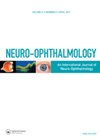
Journal Reviews
Outcomes of adult new-onset strabismus presenting acutely
This study evaluated causes, neuroimaging rates and results, and clinical courses of adults presenting to an ophthalmology emergency department with diagnosis of new-onset strabismus. This was a retrospective study of 557 adults (54.8% male) with mean age of 57.3 ±16.7...
Significant associations to presence of significant retinal haemorrhages in suspected child abuse
The authors aimed to extract statistically significant associations between non-ocular clinical and diagnostic imaging findings and the presence of significant retinal haemorrhages, and then develop an evidence-based screening algorithm to determine when to consult an ophthalmologist in suspected child abuse...
Effect of heredity on risk of diabetic retinopathy
This study used survival analysis on 2199 patients who had reached vision-threatening diabetic retinopathy to investigate the contribution of heredity to diabetes together with other known risk factors for the development of either proliferative diabetic retinopathy (PDR) or diabetic macular...
Rare presentation of giant cell arteritis in Chinese subjects
Only a few case reports of biopsy-proven GCA (BpGCA)-associated vision loss in Chinese subjects have been published. This paper presents three elderly Chinese subjects with BpGCA who presented with vision loss. A search of the literature was also conducted to...
Subperiosteal abscess management in adolescents and adults
This is a retrospective study looking at the clinical and treatment profiles of patients with orbital subperiosteal abscess (SPA) in an adolescent and adult population. SPA is rarer in this age group compared to a paediatric population (less than nine-years-old)...
Comparison of outcomes of bilateral cataract surgery across different age groups
The authors present a retrospective records review of children who had bilateral cataract surgery between the ages of two and seven years of age over a 23-year period. Children with other ocular pathology and prior surgery were excluded. A minimum...
Possible mechanism for infant development of secondary glaucoma
The authors consider published evidence with regard to potential causative mechanisms for secondary glaucoma that follows infant lensectomy. They review clinical and laboratory studies. The mechanism they propose is that the original lensectomy surgery releases immature anterior lens cells into...
Comparison of nylon versus polyglactin sutures
The purpose of this study was to compare postoperative complications between incision closure by nylon suture and polyglactin suture in paediatric cataract surgery. This was a prospective single-centre non-randomised study of 82 eyes (41 children) with median age of four...
Change in psychosocial, quality of life and anxiety after strabismus surgery
The authors aimed to define the impact of surgical correction on psychiatric problems, health-related quality of life and anxiety levels in children and their parents. This was a cross-sectional study of 39 children with strabismus and their parents. All children...
Sensorimotor outcomes following paediatric ocular trauma
A retrospective assessment of sensorimotor outcomes was conducted in paediatric patients after ocular trauma to evaluate potential predictors of poor outcome including time of treatment deprivation, Paediatric Ocular Trauma score (POTS) and patient characteristics. The review was from 2006-2020 and...
Association between neurodegeneration and macular perfusion in the progression of diabetic retinopathy
In this prospective three-year longitudinal study, the authors aimed to explore the relation between retinal neurodegenerative changes and vessel closure (VC) in individuals with non-proliferative diabetic retinopathy (NPDR). The participants included 74 individuals with type 2 diabetes, NPDR, and Early...
Single case report of horizontal gaze paresis due to medial pontine haemorrhage
The authors report a single case (80-year-old female) of bilateral horizontal conjugate gaze palsy due to a dorsal median pontine haemorrhage. The patient presented with skew deviation, bilateral horizontal conjugate gaze palsy, vertical gaze palsy, ipsilateral lower motor neuron facial...

